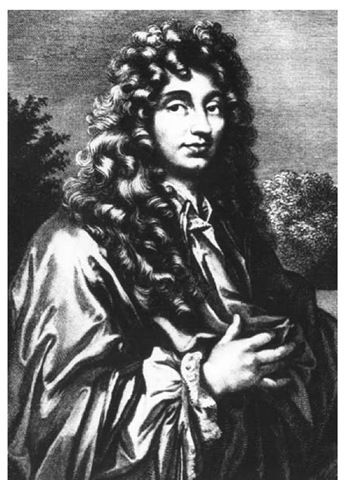Christiaan Huygens fueled the Scientific Revolution with his wide-ranging scientific contributions, from astronomical observations to theories of mechanical physics. By the age of 25, he had made a major astronomical discovery (rings and satellites of Saturn). He also invented the pendulum clock and published a renowned book on the oscillatory motion exemplified by the pendulum.
His contribution that exerted the greatest influence on society was his proposal of the wave (or pulse) theory of light, which overturned the particle theory of light.
Huygens was born on April 14, 1629, in The Hague, Holland. He was the son of Constantin Huygens, a Renaissance man who raised Huy-gens in an intellectually stimulating atmosphere, entertaining the likes of Rene Descartes in his salon. Huygens commenced his study of mechanics at the age of 13, and in 1645, he enrolled in the University of Leiden to study mathematics and law. He transferred to the College of Breda two years later, graduating with a degree in jurisprudence.
In 1651, at the age of 21, Huygens published his first paper, on the quadrature of certain curves. He and his older brother discovered a new method for grinding and polishing telescopic lenses, and in 1655, he made his first major scientific discovery—the existence of rings encircling the planet Saturn. As well, he discovered one of Saturn’s moons, Titan. The next year, he identified components of the Orion nebula. In 1657, he invented the pendulum clock while studying planetary motion. In 1659, he published Systema Saturnium, gathering together his astronomical observations, including the above discoveries as well as a demonstration of the period of Mars.
In 1661, Huygens visited London for the first time; in a lecture before the Royal Society, he demonstrated his laws of collision. Duly impressed, the Royal Society inducted him as a foreign member in 1663. The Academie des Sciences elected him a foundation member in 1666, upon his moving to Paris to accept a pension from King Louis XIV. He remained there until 1681, installing himself at the Biblio-theque Royale. In 1672, he instructed gottfried wilhelm leibniz in mathematics and arranged for the presentation of his first paper, on differential calculus, to the Academie des Sciences in 1674.
Christiaan Huygens discovered the rings and satellites of Saturn.
In 1673, Huygens published Horologium Oscillatorium, which Florian Cajori considered second only to Sir isaac newton’s Principia in scientific significance. In it, Huygens presented his theories of harmonically oscillating systems, including his formula of the period of oscillation of a simple pendulum.
In a 1678 communication to the Academie des Sciences, he introduced his undulatory theory of light, also known as the wave or pulse theory of light. Arguing against the particle theory of light, Huygens theorized that light vibrates through the ether until it reaches the eye. Huy-gens’s principle posits the existence of two "wave fronts," one primary and one secondary, which accounted for both reflection and refraction of light. Interestingly, he did not publish these ideas for a dozen years, finally doing so in 1690 in Traite de la Lumiere.
Huygens opposed his contemporary (and perhaps his only intellectual peer), Sir Isaac Newton, on numerous scientific issues. The wave theory of light differed from Newton’s explanation, in that Huygens conceived the velocity of light as directly proportional to the sine of the angle of refraction, while Newton considered the proportion inverse. It was not until 1851 that this disagreement was settled experimentally by J. B. L Foucault and A. H. L. Fizeau. Huygens settled his own score with Newton when he met him personally on his second trip to London, in 1687—in a lecture before the Royal Society, he publicly argued against Newton’s theory of gravity, pointing out several points that Newton conspicuously avoided.
Also on this trip, Huygens presented optical lenses with unusually large focal lengths to the Royal Society (where they remain on display). Upon his return to his homeland, where he remained for the rest of his life, he invented a telescopic eyepiece for reducing chromatic aberrations; this achromatic eyepiece still bears his name. Huygens suffered from a protracted and painful illness and finally died on June 8, 1695, in The Hague.

